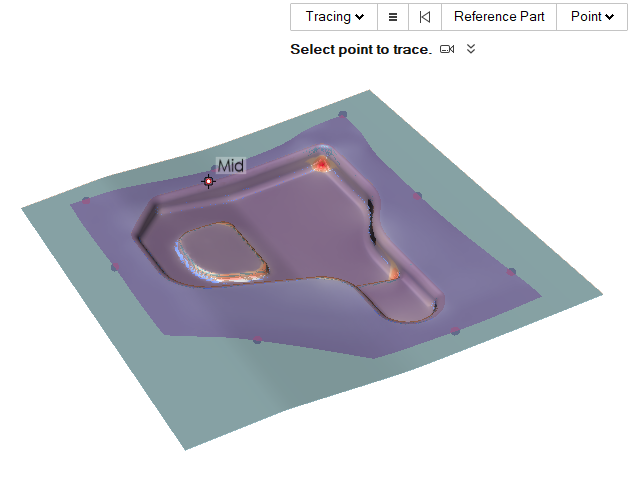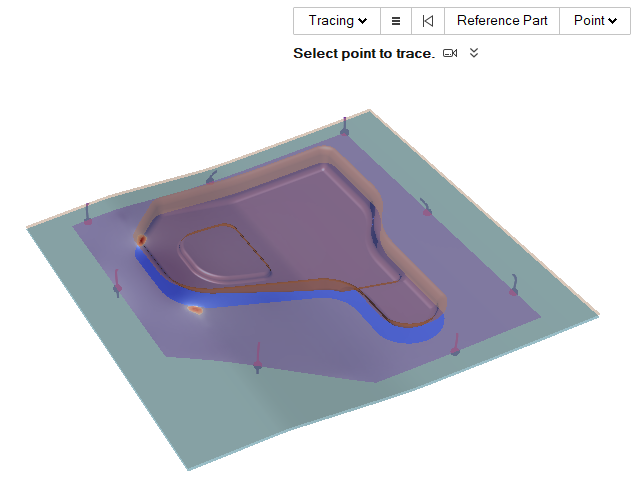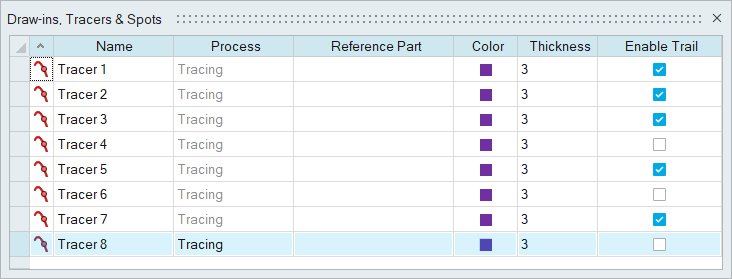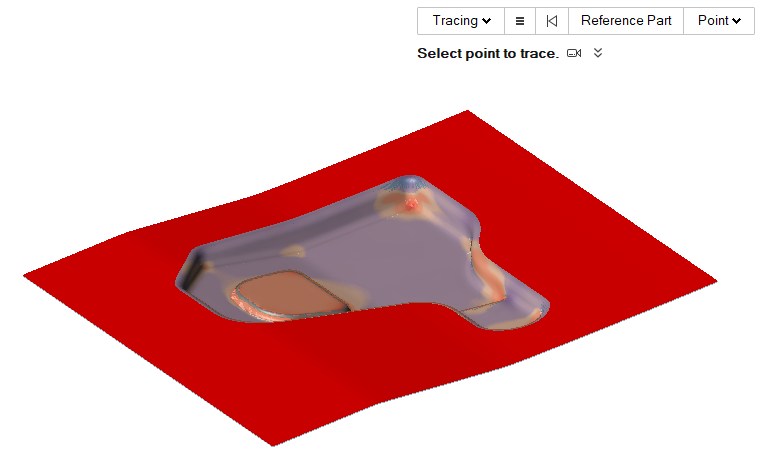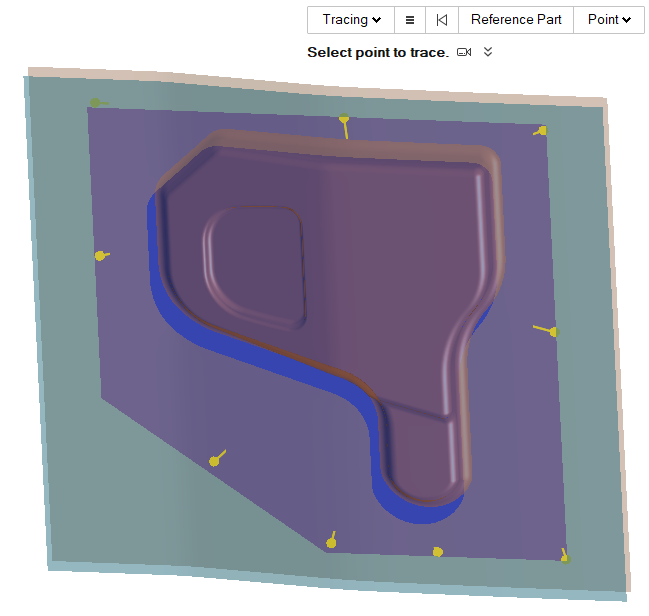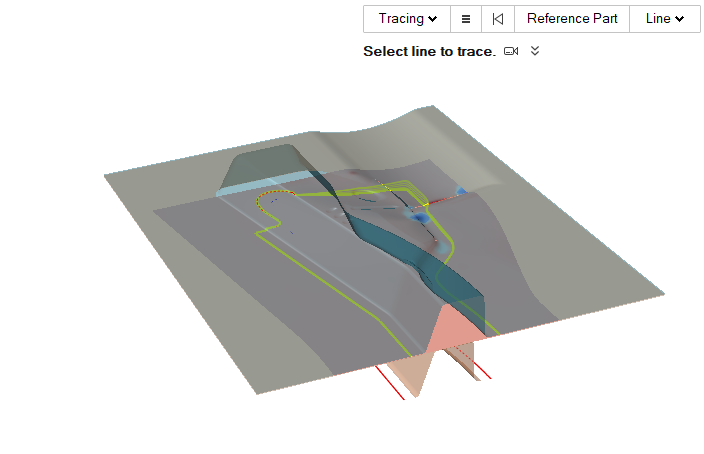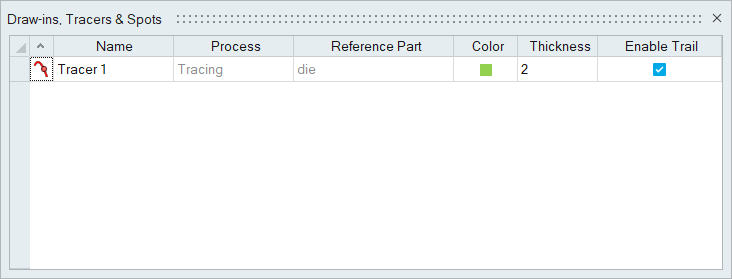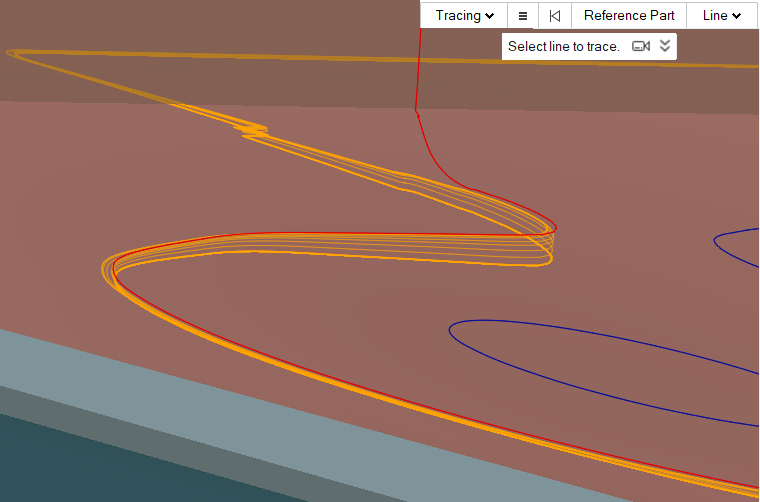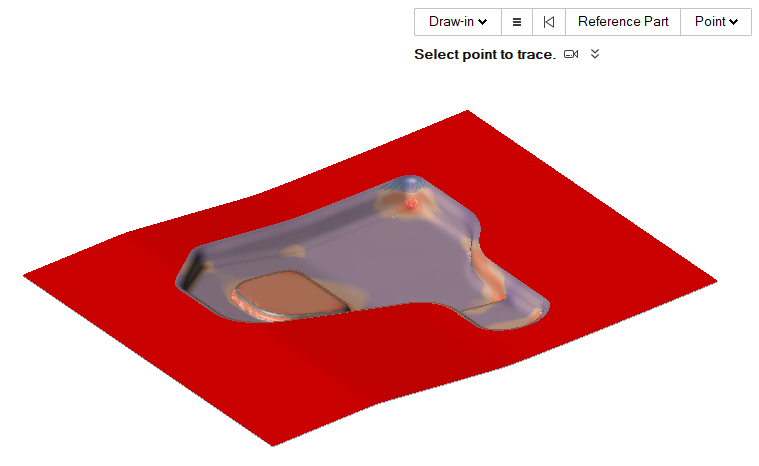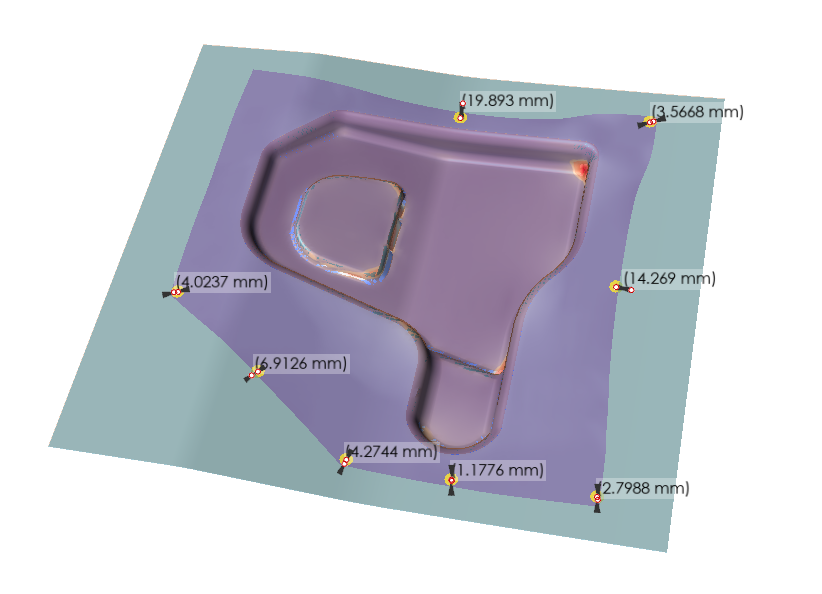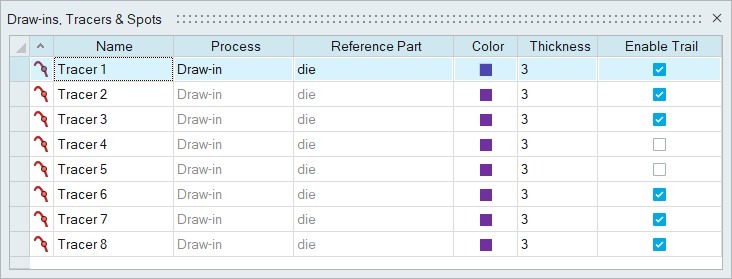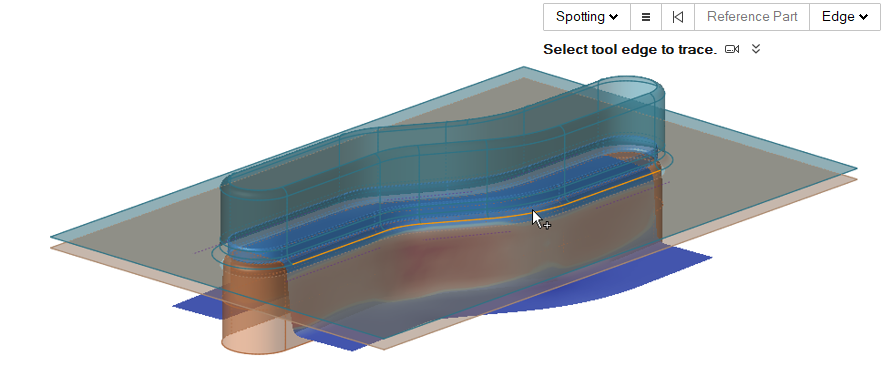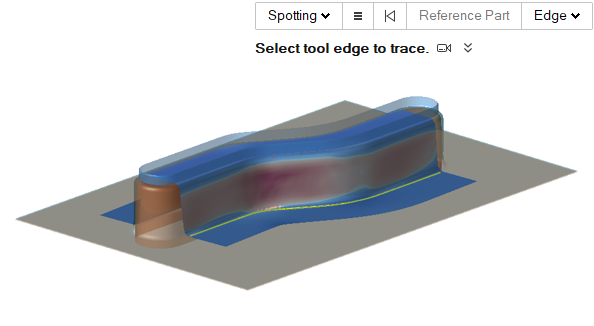Trace on a Tryout Analysis
Choose points, lines, or edges to measure how the forming process changes the blank. Tracers are useful to determine the best sized blank and understand how the material flows during the forming process.
- Tracers are associated with part features. The tracer may be deleted if changes are made to the part feature or geometry associated with it.
- Tracers can be hidden or shown by clicking their icons in the Model browser or by using the context menu.
- You can change the color and line thickness of the tracer and its trace path in the Property Editor.
Trace Points on a Blank Without a Reference Part
Trace Points on a Blank Using a Reference Part
Trace Lines on a Blank Without a Reference Part
Trace Material Draw-In On a Sheet
Create Geometry from a Trace Path
- Create a tracer and run a motion analysis.
- Right-click on the tracer and select Create Spline from the context menu. A massless part is created in the Model Browser. This part can now be pushed, pulled, and otherwise manipulated.
- To create valid splines, make sure the trace path does not loop back over itself. Try reducing the End Time to control how far the trace path extends.
- Alternatively, you can create a polyline by selecting Create Polyline from the context menu. Polylines are segmented rather than smooth line spline curves.
- Multiple selection is supported if you have multiple trace paths that you want to convert to splines or polylines.
- If you want to keep a tracer for future use, ground the spline that you created or add it to a rigid group.
Spot Tool Edge on a Blank
Tracers Table
The Tracers Table lists all of the tracers in your model and allows you to edit various attributes.
Location: Tracers tool, satellite icon ![]()

Figure 1. Tracers Table
| To | Do this |
|---|---|
| Rename a tracer | Select the cell in the table and then click again to make the field editable. |
| Change the color | Select the color cell in the table and then select a different option from the color palette. |
| Sort a column | Click the column header. Click repeatedly to toggle between ascending and descending order. |
| Add or remove columns | Right-click on a column header. |
Shortcuts
| To | Do this |
|---|---|
| Select a reference part | While a tracer is selected, hold down the Ctrl key and left-click a part to act as the paper. |
| Exit the tool | Right-click and mouse through the check mark to exit, or double-right-click. |
 to
define the orientation of a line projection.
to
define the orientation of a line projection.
